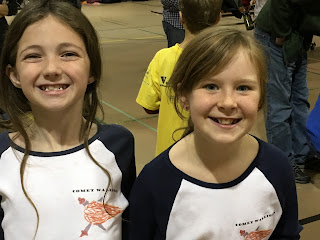In researching this topic, Olivia emailed the President of the Wildlife Conservation Network and asked him a few questions:
Dear Mr. Knowles,
My name is Olivia O'Driscoll and I'm emailing you on behalf of my Lego Robotics Team. This year we (and 70,000 other teams) are working on finding ways to improve human-animal interactions. We spent a lot of time looking at the WCN website and talking to people in conservation and think we have an idea. We're hoping that you could give us your thoughts on whether it would be worthwhile.
A basic problem in conservation seems to be figuring out which species need help and whether the help they get is working. Answering these questions requires knowing how many of a species exist and whether the number is growing or shrinking. One paper we saw said "Accurate and on-demand animal population counts are the holy grail for wildlife conservation organizations throughout the world because they enable fast and responsive adaptive management policies." (http://journals.plos.org/
The people who wrote that paper came up with a way to count wildebeest in aerial photos. They say it works pretty well, but still needs some improvement. We think we might be able improve on it.
Since those people are scientists instead of conservationists we thought we should check with you before getting too excited. We're hoping you could answer a couple of questions for us:
1) Do you think this is a problem worth working on?
2) Are there solutions that are already good enough and cheap enough?
3) Are there obstacles to getting solutions adopted even if they work?
We know you're super busy but if you could give us any insights on this problem, or any others you think would be working on we'd really appreciate it. Thanks!
-- Olivia and the Comet Warriors
He kindly got back to us and anwwered:
Dear Olivia and the Comet Warriors,
1) Do you think this is a problem worth working on?
Thank you for your email and thanks for your commitment to wildlife conservation. I apologize for the slow response as I've been traveling.
Before answering your questions I wanted to qualify that I'm not a conservation biologist nor have I done any of this work in the field. I do support this type of work and my 22 years working in this space does give me a broad perspective.
So, to answer your questions:
1) Do you think this is a problem worth working on?
Yes. In order to affect any type of change one must be able to measure the system before you take action and after the action is completed. Counting is expensive, time consuming, and inaccurate. For example, Paul Allen spent $6 million counting elephants and the results took three years to come out, however, the results of those data are defining conservation actions across Africa for elephants.
A less expensive, more accurate way of counting animals would be of great value.
2) Are there solutions that are already good enough and cheap enough?
There are a host of solutions and you can probably find a number online. They include, for example:
a) Aerial counting from planes
b) Using camera traps to see what walks by
c) Collecting scat (poop) and doing DNA analysis to figure our how many unique animals it represents and then using statistics to estimate populations.
d) Putting up "hair combs" on trees and then putting scent on them so cats (Canadian lynx, mountain lions, etc) rub them and then analyzing the hairs.
These solutions range widely in their cost and the value of the data. Sometimes you only want to know if the animal exists at all. Sometimes you want to know if there are "some, many, or a lot" of the species. Sometimes, like with the Amur leopard, of which there are only 32, you want to know EXACTLY how many there are.
Some of the methods are good enough and cheap enough. Many are not.
3) Are there obstacles to getting solutions adopted even if they work?
Yes, there are many obstacles. Scientists can be set in their ways and have strong egos about how things are done. Cost is always a consideration. Using the same method over a long period of time is important so you can compare to previous results. However, if there is a better and less expensive way to do this it would be eventually adopted and used widely for the great benefit of wildlife conservation.
I hope this is helpful. I'm excited to learn more about your idea and if we can make it happen.
All the best,
Charlie
This should give us a starting point on our research, and an idea of what kinds of animals we might count and how accurate we need to be. We'll talk more about this this week, and the word for the week is "Charlie".
An example problem would be to figure out how many zebras are in this picture:
We also worked on our robot missions. For several missions we tried this approach:
1) See if we can do the mission with our hand.
2) See if we can design a robot attachment to do what we did with our hand.
3) See if we can attach the attachment to the robot and do the mission by pushing the robot.
4) (For this week) see if we can program the robot to move the way we pushed it.
See you all on Thursday!







